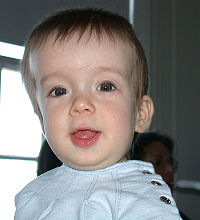
Congenital bilateral absence of the semimembranosus muscles
Sign Up to like & getrecommendations! Published in 2019 at "Skeletal Radiology"
DOI: 10.1007/s00256-019-03210-3
Abstract: Variations of the anatomy of the hamstring muscle complex are uncommon. In particular, absence of some or all of the hamstring muscles is rarely described in the literature. This report presents a case of absent… read more here.
Keywords: absence; bilateral absence; semimembranosus; congenital bilateral ... See more keywords

Congenital bilateral absence of the vas deferens as an atypical form of cystic fibrosis: reproductive implications and genetic counseling
Sign Up to like & getrecommendations! Published in 2018 at "Andrology"
DOI: 10.1111/andr.12450
Abstract: Congenital bilateral absence of the vas deferens (CBAVD) is found in 1% to 2% of males with infertility and is present in 6% of obstructive azoospermia cases. Nearly 95% of men with cystic fibrosis (CF,… read more here.
Keywords: genetic counseling; congenital bilateral; cystic fibrosis; bilateral absence ... See more keywords

SLC9A3 Affects Vas Deferens Development and Associates with Taiwanese Congenital Bilateral Absence of the Vas Deferens
Sign Up to like & getrecommendations! Published in 2019 at "BioMed Research International"
DOI: 10.1155/2019/3562719
Abstract: Background The pathophysiology of Taiwanese congenital bilateral absence of the vas deferens (CBAVD) is different from that in Caucasians. In particular, major cystic fibrosis transmembrane conductance regulator (CFTR) mutations and cystic fibrosis are absent in… read more here.
Keywords: vas deferens; taiwanese congenital; slc9a3; congenital bilateral ... See more keywords

Report of a Father With Congenital Bilateral Absence of the Vas Deferens Fathering a Child With Beare–Stevenson Syndrome
Sign Up to like & getrecommendations! Published in 2020 at "Frontiers in Genetics"
DOI: 10.3389/fgene.2020.00104
Abstract: Background Apert, Pfeiffer, and Crouzon syndromes are autosomal dominant diseases characterized by craniosynostosis. They are paternal age effect disorders. The association between paternal age and Beare–Stevenson syndrome (BSS), a very rare and severe craniosynostosis, is… read more here.
Keywords: beare stevenson; bilateral absence; age; congenital bilateral ... See more keywords

An infertile patient with Y chromosome b1/b3 deletion presenting with congenital bilateral absence of the vas deferens with normal spermatogenesis
Sign Up to like & getrecommendations! Published in 2018 at "Clinical and Experimental Reproductive Medicine"
DOI: 10.5653/cerm.2018.45.1.48
Abstract: We report the case of a 46-year-old Chinese male patient who visited our clinic complaining of infertility. Semen analysis revealed azoospermia, and azoospermia factor c region partial deletion (b1/b3) was detected using Y chromosome microdeletion… read more here.
Keywords: spermatogenesis; vas deferens; bilateral absence; deletion ... See more keywords